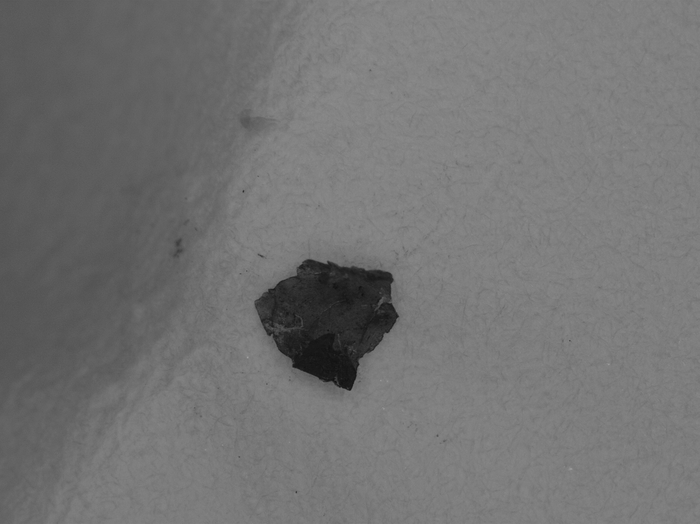A new study has highlighted that flakes of paint could be one of the most copious types of microplastic particles in the ocean.
 A microscopic paint flake, measuring around 320 μm in diameter, collected during a CPR survey in the Southern North Sea ((Image Credit: Andrew Turner, University of Plymouth)
A microscopic paint flake, measuring around 320 μm in diameter, collected during a CPR survey in the Southern North Sea ((Image Credit: Andrew Turner, University of Plymouth)
Through a variety of surveys carried out across the North Atlantic Ocean, researchers projected that each cubic meter of seawater had an average of 0.01 paint flakes.
This, they say, indicates the material is second only with regards to the recorded abundance of microplastic fibers, which have a projected concentration of approximately 0.16 particles per m3.
A comprehensive chemical analysis of a few of the flakes, performed on some of the particles collected during the surveys, also exposed high quantities of iron, copper, lead and other elements.
This is due to the fact they are engineered to have anti-corrosive or antifouling properties, with the scientists stating it could pose a further environmental risk to both the ocean and numerous species living within it when they swallow the particles.
The study has been published in Science of the Total Environment and was conducted by researchers from the University of Plymouth and the Marine Biological Association (MBA).
Over the past twenty years, the organizations have worked together on several ocean plastics projects, and in 2019, they showed there has been a substantial increase in open-ocean plastics since the late 1950s.
Paint particles have often been an overlooked component of marine microplastics but this study shows that they are relatively abundant in the ocean. The presence of toxic metals like lead and copper pose additional risks to wildlife.
Dr. Andrew Turner, Study Lead Author and Associate Professor (Reader) in Environmental Sciences, University of Plymouth
The study is based on the data collected by the MBA’s Continuous Plankton Recorder (CPR), which is equipped with silk meshes and towed in surface waters resembling the areas occupied by sea mammals.
During 2018, it was employed to sample seawater straight across the North Atlantic zone, from the eastern United States to Sweden, and from the Arctic Ocean to Spain.
Over 3,600 samples were gathered during that time, and flakes were noticed in approximately 2.8% (102) of all silks examined. That compares with strands or fibers being noticed in 48.8% (1763) of silks across the same period.
Paint flakes also seemed to be more densely spread near the shelf seas of northwest Europe than in the open, or more remote, ocean locations.
The paint particles were examined using x-ray fluorescence (XRF) spectrometry in labs at the University, with their chemical composition matching those discovered on the hulls and other painted parts of ships traveling across the Atlantic region.
We now know that plastics are everywhere, and that most organisms are likely ingesting them, however there is less known about how harmful this ingestion might be. This study has highlighted that paint flakes are an abundant form of microplastic that should not be overlooked, particularly as some may have toxic properties.
Dr. Clare Ostle, Study Co-Author and Co-Ordinator of Pacific Continuous Plankton Recorder Survey, Marine Biological Association
Journal Reference:
Turner, A., et al. (2021) Occurrence and chemical characteristics of microplastic paint flakes in the North Atlantic Ocean. Science of The Total Environment. doi.org/10.1016/j.scitotenv.2021.150375.